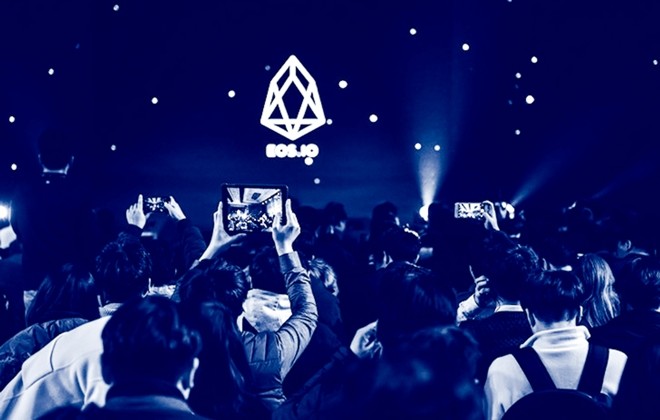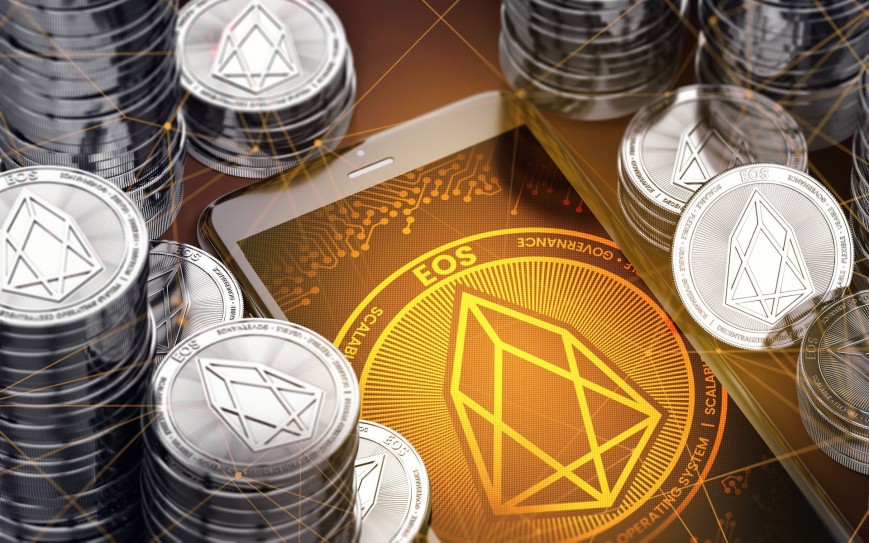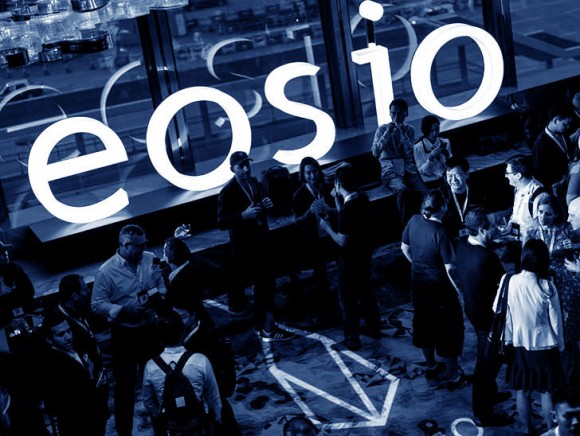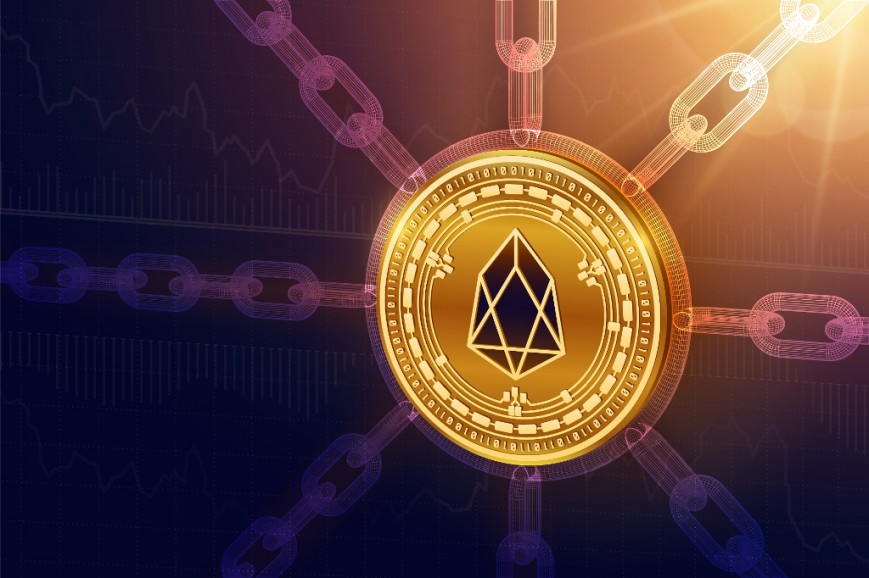 In just one year, the EOS token caused a sensation in the crypto-community, earned the nickname of “ethereum killer” and brought the most successful profits to its most successful owners. Without news about it, not a week goes by, and enthusiasts and investors can’t come to a common opinion: what will EOS become - one of the most successful blockchain projects or a huge failure of $ 4.2 billion.
In just one year, the EOS token caused a sensation in the crypto-community, earned the nickname of “ethereum killer” and brought the most successful profits to its most successful owners. Without news about it, not a week goes by, and enthusiasts and investors can’t come to a common opinion: what will EOS become - one of the most successful blockchain projects or a huge failure of $ 4.2 billion.
Record ICO EOS Tokens
The emitter of coins, the Block.one company, did not bother to waste money and immediately released 1 billion "coins" (tokens), of which 100 thousand were reserved for themselves, and successfully sold the remaining 900 thousand within the framework of ICO (primary placement of coins). The crowdsale (selling access to cryptocurrency) lasted almost a year from June 26, 2017 to June 1, 2018, and this is the first record of the EOS primary offer. Today it is the longest ICO for the brief history of this method of raising funds for a startup.
The second record looks even more impressive - Block.one managed to attract an astronomical amount of investment of $ 4.2 billion. Here it should be noted that the project team managed to achieve such success without having a working platform and at least at least some product. Already in the first 5 days, investors bought EOS for $ 170 million, although they paid for a clean idea.

How can we explain the willingness of people to invest such inconceivable money in a project that at the time of the launch of ICO had nothing but a general description of a future product?
Perhaps the role was played by the participation in the project of Dan Larimer, an ambiguous figure, but very well known in the crypto community. At least no one disputes his talent as a developer and the ability to find original approaches to building cryptocurrency platforms. Previously, he showed himself to work on other high-profile startups - the Bitshares exchange and the Steemit social network. True, both projects, like Larimer himself, raise doubts among the public, and some experts still label them scam (projects that do not fulfill obligations to investors).
Of course, not one Larimer we owe the appearance of EOS. The company Block.one, registered in the Cayman Islands, employs about 35 people. Brendan Blümer, who previously worked on startups ii5 and Okay.com and became a well-known figure in the blockchain industry in 2014, is holding the position of executive director. Cryptographer Jan Grigg is a recognized specialist in the development of security technologies for financial systems. The advisors include the Chairman of the Board of Directors of the Bitcoin Foundation Brock Pierce.
The huge amount of fees in the absence of the finished product is quite predictably caused by the murmur of the participants of the crypto-community. They began to talk about large-scale fraud. However, Block.one regularly fulfills its obligations. The company introduced the promised product, although not without a flaw, but the EOS minnet was launched in June 2018.

What is EOSIO and why is it necessary?
As part of its record-breaking ICO, Block.one raised funds for software development under the name EOSIO. That is, it is not even a blockchain platform, but only software for building blockchain networks, both public and private. As conceived by the creators, EOSIO should be an analogue of traditional operating systems with ready-made functionality to create a blockchain with the possibility of vertical and horizontal scaling and, as a result, throughput that is immense by today's standards.
According to the Block.one plan, the software should provide the ability to:
- creating smart contracts with parallel execution,
- creating and managing accounts,
- authentication,
- formation of personal databases and access control to them,
- running decentralized applications
- issue your own tokens for all EOSIO users who wish to acquire their own coin and conduct an ICO.
Initially, it was not going to launch its own blockchain platform, Block.one. This should have been done and yet made the members of the community themselves. At the same time, the holders of EOS tokens were given the opportunity to accept one or several blockchain networks based on the EOSIO software for transferring their coins, initially issued on the basis of Ethereum, to them. For this purpose, the blockchain should have been supported by owners of at least 15% of tokens.
EOSIO code is publicly available. Anyone can use it for free to launch their network with the ability to make changes to its configuration and adapt to their needs. Block.one will not have any control or access to manage such platforms. That is, in fact, investors who have bought EOS do not have any rights to the software itself, for the development of which Block.one collected money for ICO.
Why does EOS deserve attention?
In terms of functionality, the platform launched on the basis of EOSIO is comparable to Ethereum, which was the reason for comparing EOS and the brainchild of Buterin.
However, a much higher bandwidth speaks in favor of our hero of the day, and it stems from an effective approach to solving the scaling problem. The basis of the method proposed by Larimer was the DPoS consensus algorithm — delegated proof of stake. The transaction is confirmed by several “witnesses” - the purse owners in the EOS network. These block manufacturers are chosen by the coin holders by universal suffrage.
During the processing of transactions and the formation of new blocks, the system automatically shuffles selected wallets, selecting one of them to confirm the next fragment of the chain. This allows you to eliminate competition between manufacturers of units. In addition, due to the built-in mechanisms, the blockchain is resistant to forks (the ability to “bud off” the new currency with the database from the old one) —when the network is branching out, the system itself chooses the longest chain.
It is the responsibility of the manufacturers of the blocks to provide the network with a certain amount of computing power and to maintain high transaction processing speed. If any of them fails to do their work within 24 hours, they are suspended from working on the confirmation of transactions.
“Witnesses” receive remuneration in coins for their capacities, the total amount of which per year should not exceed 5% of the total number of EOS coins issued. They can also sell RAM and disk space as a resource. In addition, the “witnesses” have quite broad powers within the network. In particular, block manufacturers can stop transaction processing when it is required to correct problems, and even block individual addresses on the EOS blockchain.
As a result, the platform launched on the basis of the Block.one software is characterized by:
- virtually unlimited scalability;
- large bandwidth - up to 1000 transactions in the near future and up to 1 million and more in the long term;
- short transaction confirmation time - just 0.25 seconds;
- the flexibility and ability to quickly troubleshoot technical problems and other problems that may arise in the network, including the theft of coins;
- the lack of transaction fees, although this does not mean that all the resources of the manufacturers of the blocks can be used for free - as already noted above, you will have to pay for the allocation of operating memory and disk space.
Why criticize EOS?
EOS criticism begins with the person Larimer. His previous projects have an ambiguous reputation. In addition, the developer left both startups at the beta testing stage. It cannot be excluded that with his third blockchain start-up he will do the same. Of course, it could deal a strong blow to the EOS course. However, Larimer himself says that past initiatives were preparation for the creation of a new project, and he threw them out of disagreements with other team members.
The second object of criticism is a curious item in the project documentation, according to which Block.one disclaims all responsibility for the result of its work. Moreover, it contains an indication of the absence of a practical EOS token. Investors were immediately told that the Coin does not give its owners any rights, including in the framework of the minenet. It can be concluded that there was no point in buying an EOS at all.
As a result, the token with a share of sarcasm was called “a coin without an appointment,” noting that the only purpose of its release was to raise funds for Block.one. The situation is aggravated by the fact that according to the same project documentation, the company can dispose of the money received during the ICO at its discretion. That is, she did not even promise to spend them on the development of EOSIO.

Hence, there are many statements from “experts” that EOS initially had no other purpose than to collect money, and the owners of the coin receive virtually nothing. We cannot agree with such statements, and below we will explain why. The Block.one itself, in turn, explained the controversial point in its documents with a simple legal formality - this way they are protected from possible investors' claims. They can be understood - no one wants to get a couple of lawsuits from coin buyers, like Ripple.
The third claim to EOS is centralization. This argument against this platform is directly related to the use of the DPoS algorithm and is based on two good reasons:
The producers of the blocks have too much power.
The operational management of the blockchain is actually in their hands. In particular, shortly after the launch of the EOS minnet, block manufacturers allowed themselves liberty unheard of for decentralized networks - they blocked several accounts due to the suspicion of trying to steal tokens. In fairness, I must say that there is arbitration on the network, although his powers are too large for a decentralized network. However, if you look at the situation from the perspective of a potential victim of hackers, the availability of the ability to quickly stop the actions of intruders can hardly be characterized as purely negative.
Network management is concentrated in the hands of large EOS holders.
Indeed, almost 50% of the coins belong to the owners of 10 wallets. It remains for them to purchase some more Coin in order to gain complete joint control over the network. The rest of the EOS holders, although they have the right to participate in polls when choosing producers of blocks and solving other issues, do not in any way affect the network. As a result, EOS has become known as oligarchy under the guise of democracy.
Vitaly Buterin notes the weaknesses of the management system adopted for EOS, pointing out its vulnerability from the point of view of security, as well as extensive opportunities for censorship and imposing restrictions on the launch of certain decentralized applications based on the platform.
Should I buy EOS?
So, many believe that EOS was released to collect money, and this coin is no good for anything else.
In fact, it is not. EOS holders receive:
Ability to use network resources. For example, for the use of computing power on the account must be reserved a certain number of coins. After the expiration of the term specified in the contract, the Coins are released, and the owner can again dispose of them. Thus, coins have quite understandable practical purpose.
The right to participate in the voting. EOS owners share the ability to manage the network, and this can be interpreted as joint ownership of the platform. The only problem is that the holders of a small number of Coins cannot be with the owners of large amounts in EOS, but these are details.
Opportunity to participate in eyrdropy (short-term free distribution of coins between network members) of projects that run on the basis of EOS. Surely many projects will distribute their tokens among holders of the native coin platform. However, this is already happening, so you can count on passive income.
The practical use of a promising blockchain platform in a native coin allows us to count on the formation of a growing demand for it from developers who will use the EOS blockchain. If the project as a whole proves successful and becomes the basis for a large number of decentralized applications, the demand will naturally stimulate the growth of the coin rate. Only 5% annual inflation will slow it down.
However, the increase in the price of a coin due to the demand among developers is a matter of time. Now the dynamics of the course of the coin is more dependent on the excitement around the project. In less than a year, EOS made its way to the top 5 cryptocurrency by capitalization. A month before the launch of the minnet at the end of April 2018, the koin quotes reached the level of $ 22.89. Taking into account the fact that in July 2017, the price of EOS fluctuated in the range of $ 1.01-4.19, early investors could get from 450% to 2166% profit. So it can already be called a good investment for those who are on the alert in time.
At the same time, the course of a coin is subject to high volatility, as, indeed, the whole crypt. The positions won in the spring, EOS completely lost - as of 09/25/2018 the price of the coin was only $ 5.7. It is unlikely that in the next couple of years something will fundamentally change - the coin will stormy for a long time. However, with the positive dynamics of the development of the network itself, a bright future definitely awaits it, with the possibility of achieving a price of $ 50 or more in 2019-2020.
It is worth noting the high expert assessment of the project. In particular, Chinese analysts put mine EOS on the first place in their ranking of public blockchains, paying tribute to technology, innovation and practical applications of the platform. If the network management system, as well as the software from Block.one, does not give a critical failure, which can completely deprive the project of investor and investor confidence, there’s no reason to be concerned about the EOS coin and its course.
How to store and where to buy EOS?
The official wallet for the coin from the developers is not and is not expected. They left the care of such trifles to the community, which also has not yet offered a convenient application. Of course, the software from Block.one provides tools for creating an account and managing funds on the balance sheet, but to use it you will have to learn the command line. Instructions for creating uchetok and wallets, as well as their management are presented in the project documentation.
Even more difficult is the creation of an account on the EOS network, on which your coins should be counted. If everything is simple with Bitcoin, ether and most cryptocurrencies, then you will have to tinker with EOS and even pay. The fact is that a new account can only be created by the owner of the coins, and to own them you must have an account. That's all confused. That is, new users will have to contact those who already have such accounts to create an account on the EOS network.
The benefit of this service has already been put on stream - enterprising coin owners are helping to open an account for a small fee. An example of such a service is eos-account-creator.com. Please note: this is only an example, not a recommendation.
As for the purchase of EOS, then the choice is great. For Fiat, including rubles, coins can be purchased on the websites of online exchangers or the EXMO exchange. You can pay by credit card. For crypto EOS will be able to buy on most top-end cryptobirth.
Report
My comments